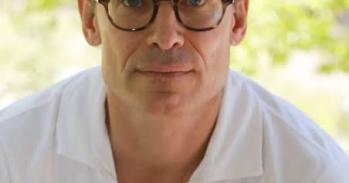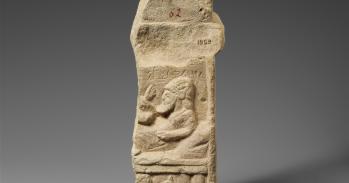
Swathed in conspiracy and suppressed by the Soviet establishment, the historical truth about the Katyn murders remained obscure for more than half a century. Yet at the same time, the memory of the massacre evolved. A new book shows how this memory defines Eastern Europe even today.
Swathed in conspiracy and suppressed by the Soviet establishment, the historical truth about the Katyn murders remained obscure for more than half a century. Yet at the same time, the memory of the massacre evolved. A new book shows how this memory defines Eastern Europe even today.
It took a tragic accident with eerie connections to an historical atrocity to evoke these memories and to begin to transform them.
Rory Finnin
In thick fog on 10 April 2010, the pilot of a Polish Air Force Tupolev Tu-154 struggled to bring his aircraft down at Smolensk North Airport in western Russia. Visibility was reduced to just 1,600 feet, and insofar as any subsequent investigation could establish, by the time he realised that he was flying too low, it was already too late. The plane hit trees on approach, turned upside down, and broke apart on the ground, parts of it eventually coming to rest a few hundred feet short of the runway. 96 people were on board; none survived.
Within hours, images of the wrecked fuselage were being broadcast around the world. The dead included the Polish President, Lech Kaczyński, his wife, Maria, and numerous senior politicians, military personnel and representatives of the clergy. In a heartbeat, the country’s leadership had essentially been lost. What was profoundly haunting was that the group had been on its way to a ceremony marking the 70th anniversary of the Katyn massacres, an incident in which 21,857 of the country’s elite had, under entirely different circumstances, also perished. The symbolism was unavoidable. Katyn is just a few miles west of where the plane went down.
What followed was an astonishing outpouring of emotion not just in Poland, but in Russia as well. Roads around the Polish Embassy in Moscow had to be closed as mourners rushed to lay flowers and sign a book of condolences. Russia organised a national day of mourning, and Vladimir Putin ordered that the film Katyn, by the Polish director Andrzej Wajda, be shown in a primetime slot on national television. As the Polish intellectual Adam Michnik observed: “The Smolensk catastrophe broke something in our Polish and Russian hearts. In the hearts of the leaders and of regular people. It was as if a gigantic dam opened - a dam behind which unexpressed words and gestures were piled up.”
Throughout the Soviet era, the fact that the Katyn massacres had been perpetrated by Stalin’s secret police, the NKVD, was systematically covered up by the Kremlin. After the Cold War, information and acknowledgement were more forthcoming but not at the rate many Polish activists wanted. The Smolensk disaster, quickly labelled Katyn-2, shook the status quo.
“Suddenly in Russia there was a new openness and a new willingness to confront the truth of what happened in 1940,” Rory Finnin, a lecturer in Ukrainian Studies at the University of Cambridge, says. “There were visible scenes of commiseration with Poland in the Russian capital, and there was productive political growth on both the Russian and Polish sides. Months after the crash, for instance, the Russia Duma unequivocally declared Katyn a crime of the Stalinist regime. In Poland, politicians and civic figures repeatedly acknowledged Russia’s own painful past and noted that many ordinary Soviet citizens had themselves been victims of Soviet state terror. There was a newfound sense of shared suffering. It took a tragic accident with eerie connections to an historical atrocity to evoke these memories and to begin to transform them.”
Memory and its shifting nature are the central concerns of the new book Remembering Katyn, which traces the ways in which the Katyn murders have been represented in Eastern Europe since 1940. Coauthored by Finnin, his Cambridge colleague Alexander Etkind and a team of scholars, it examines how the tragedy has resonated through the words and deeds of generations of activists, politicians, filmmakers, and writers. It maps that legacy not just in Russia and Poland, but in Belarus, Ukraine and the Baltic States as well.
Its scope reflects the fact that over 70 years, Katyn has evolved from the name for a single historical event into a metonym and metaphor – a shorthand for multiple killing fields in Eastern Europe and beyond. The book calls attention to the fact that, contrary to our popular understanding, the majority of the victims of the Katyn operation were executed far from the Katyn Forest itself. These Polish victims were buried in killing fields in Russia, Ukraine and, almost certainly, Belarus as well. “Katyn” has become the collective noun encompassing all of these places. It has also become a term for similar tragedies dissociated from those events. In 1949, for example, the Soviet massacre of many thousands of Ukrainians in the city of Vinnytsia during Stalin’s purges became known as the “Katyn of Ukraine”. In 1995, Srebrenica was dubbed “the new Katyn”. Like the words “Holocaust” or “Gulag”, “Katyn” has acquired a transcendent meaning.
Finnin and Etkind attribute such a phenomenon in part to the intersection, and mutual dependence, of history and memory. History may provide us with a chronicle and analysis of events, but memory refashions them for us to understand in more organic and unpredictable ways. The air crash of 2010 is an extreme example of what they call a “memory event”, a moment of rupture when the past is remembered and in effect repurposed. Other, less extreme incidents that can provoke memory events include the release of films and books, court decisions and political announcements.
“Memory events may be said to reboot cultural memory,” the authors write in the introduction to Remembering Katyn. “Much like a computer, cultural memory is dependent on an interaction between ‘hardware’ such as monuments, plaques and street signs, and ‘software’, like novels, films and marches. Monuments are inconspicuous if people are not writing about them, snapping photos of them, laying flowers at their pedestals. Marches have incomplete itineraries without a physical structure designated for commemoration and hewn from stone. Memory events reboot cultural memory by keeping this hardware and software in dialogue while refreshing and updating the code that facilitates their exchange.”
One reason that memory has become so essential to the Katyn story is because the historical truth was suppressed for so long. We now know unequivocally that on March 5, 1940, the leadership of the Soviet Union, including Stalin himself, approved a recommendation from NKVD chief Lavrentiy Beria that his men shoot “Polish prisoners of war [located in camps in Russia and Ukraine] and arrestees located in prisons of western regions of Ukraine and Belorussia.” These were men who had been arrested and interned during the Soviet invasion of Poland in 1939.
In 1942, after Germany and Russia had gone to war with one another, workers in German-occupied territory came across the graves at Katyn. The Germans elected not to release this information until the following year, Goebbels gleefully anticipating a PR coup against the Soviet enemy. After the German announcement, however, the Soviets responded by pinning the blame on the Nazis. As recent declassified US archival documents reveal, Roosevelt and Churchill tacitly recognised that Katyn had almost certainly been sanctioned by Stalin, but they towed the line for the sake of their alliance. “Let us think of these things always and speak of them never,” Owen O’Malley, British ambassador to the Polish Government-in-exile, said in a statement which summed up Britain’s ambivalence.
As the Soviet cover-up spread into the era of the Cold War, it was challenged by activists both within Communist Poland and the Polish diaspora. From the late 1940s, anonymous tributes to the victims started to spring up in key locations, notably Warsaw’s Powązkowski Cemetery. These tributes were repeatedly removed by the Polish security services. In April 1956, 20,000 Poles congregated in London to commemorate the massacres. By the 1970s, monuments had begun to appear in Stockholm and London, and in April 1980, on the 40th anniversary of the killings, Soviet dissidents issued a public statement “Look Back In Repentance” to mark the occasion.
In the late 1980s, the pending collapse of the Soviet regime allowed the Poles some limited access to Katyn, where the inscription to victims of the Nazi regime on the Soviet monument was changed, euphemistically, to a commemoration of “the fallen” that suggested no perpetrator. Mikhail Gorbachev nevertheless continued to deny Soviet state responsibility for the massacre. It was only in 1990 that this position became untenable with the discovery of new documentary evidence. Half a century after the killings, Russia finally acknowledged what Stalin had done. In 1993, Boris Yeltsin knelt before the Katyn cross in Warsaw and asked Poles: “Forgive us, if you can”.
As history, Katyn is the subject of competing narratives which, in the post-Soviet age, it has slowly become possible to test against the truth. As memory, however, the term now unquestionably goes beyond the historical event itself. As new generations grow up in Eastern Europe, they may well study the former, but their sense of who they are will also be shaped by the latter. In this respect, Katyn’s legacy is as a powerful example of what happens to history, after history has happened.
“If you look at how the past is made present to us, it’s clear that we learn as much from memory – transmitted through cultural texts like novels and films and memorials – as we do from the discipline of history itself,” Finnin adds. “Memory – how it affects us, influences us and changes us – has to be taken into account when we seek to understand society and ourselves.”
Remembering Katyn, by Alexander Etkind, Rory Finnin, Uilleam Blacker, Julie Fedor, Simon Lewis, Maria Mälksoo, and Matilda Mroz is published by Polity.
This work is licensed under a Creative Commons Licence. If you use this content on your site please link back to this page.





